
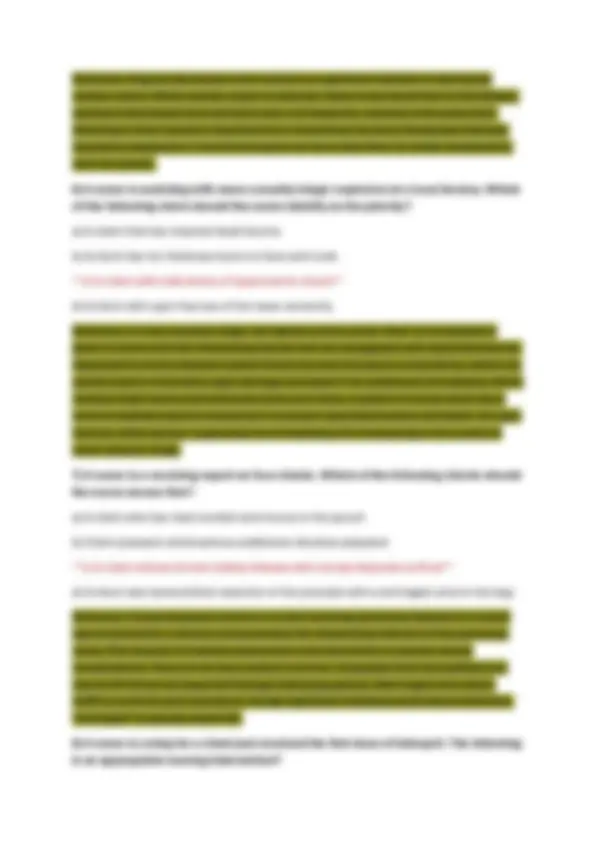
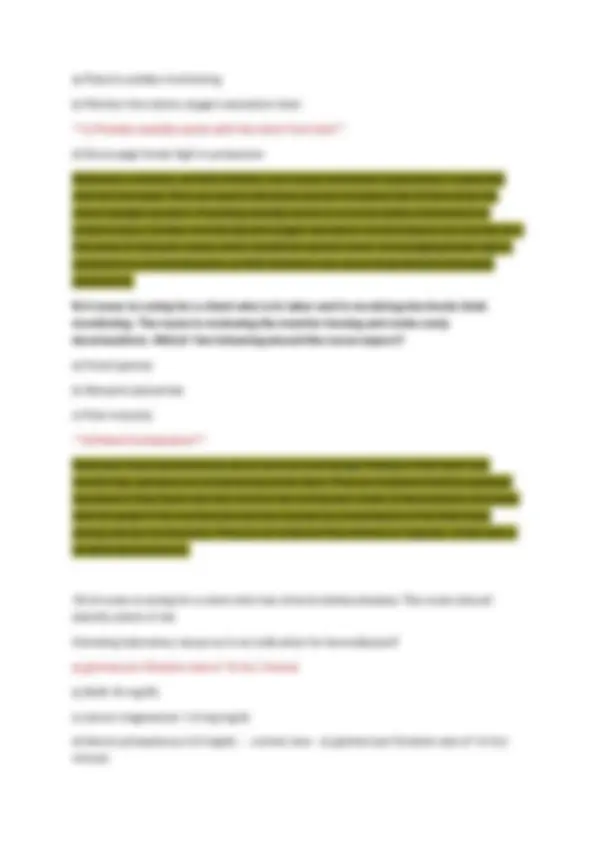
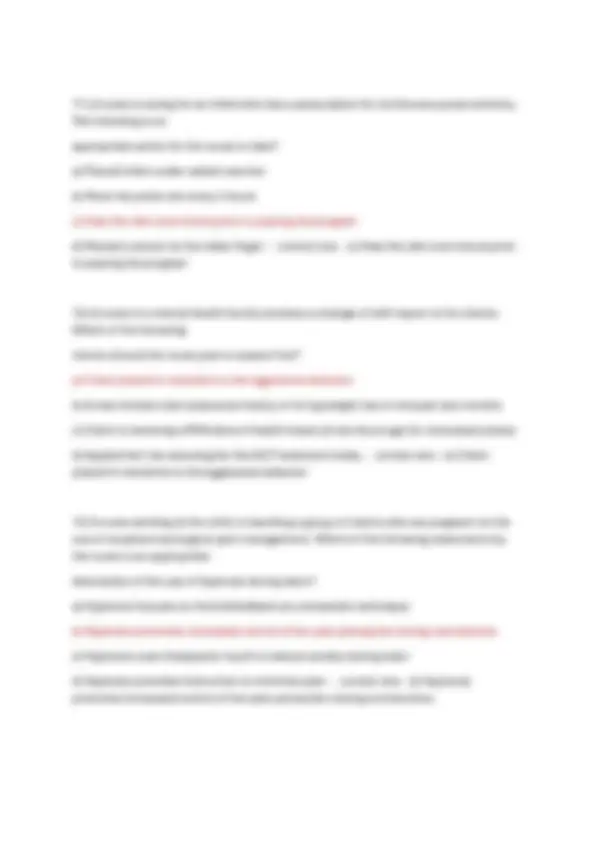
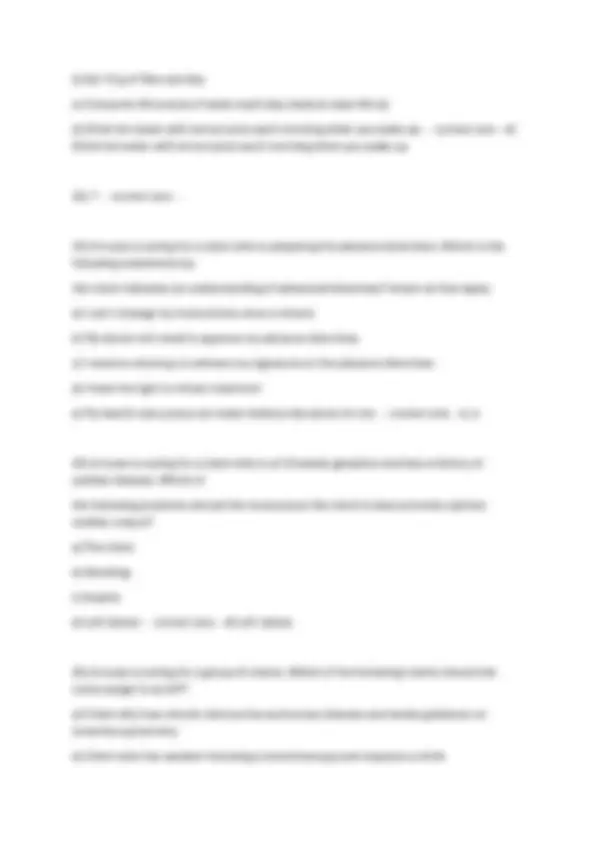
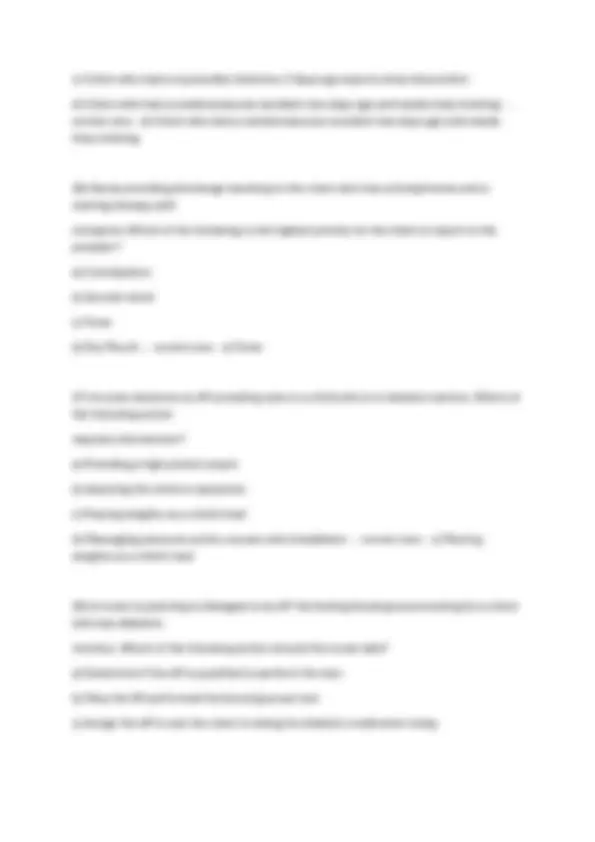
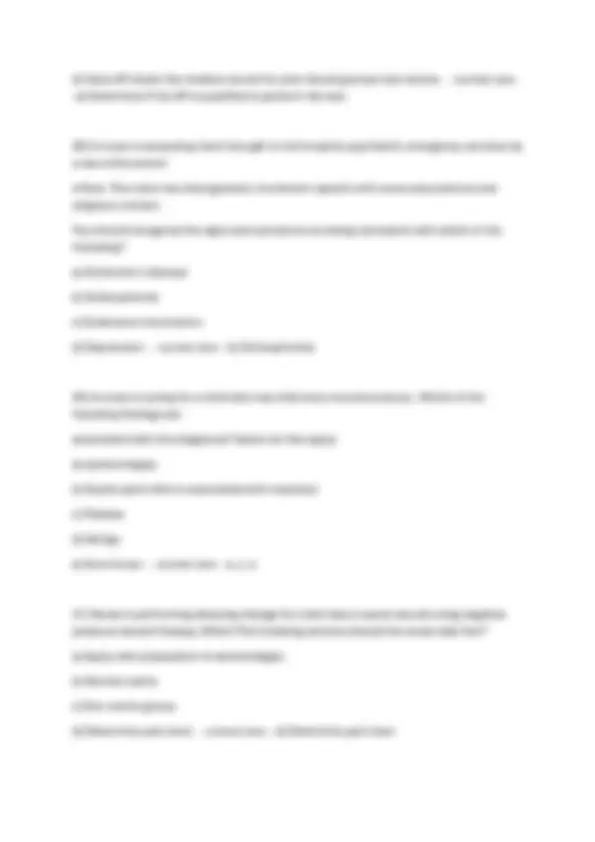
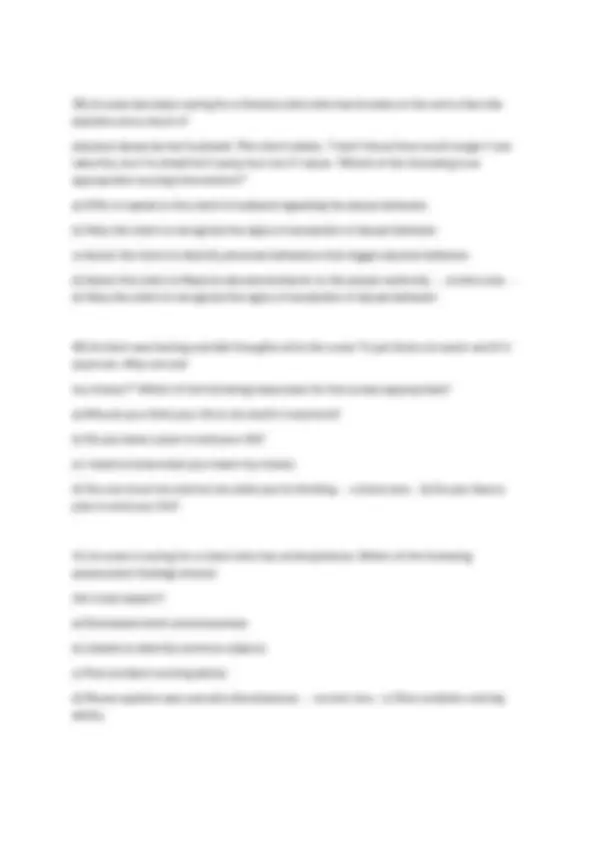
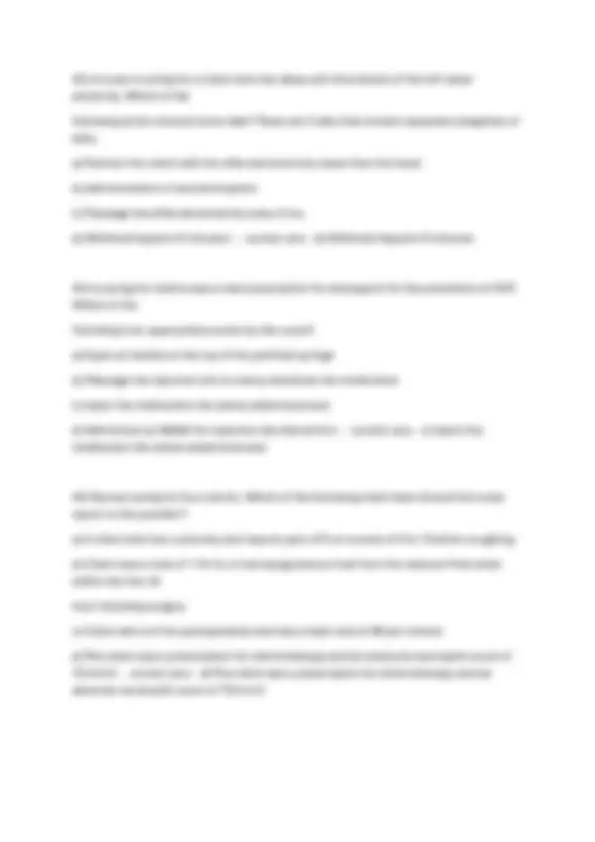

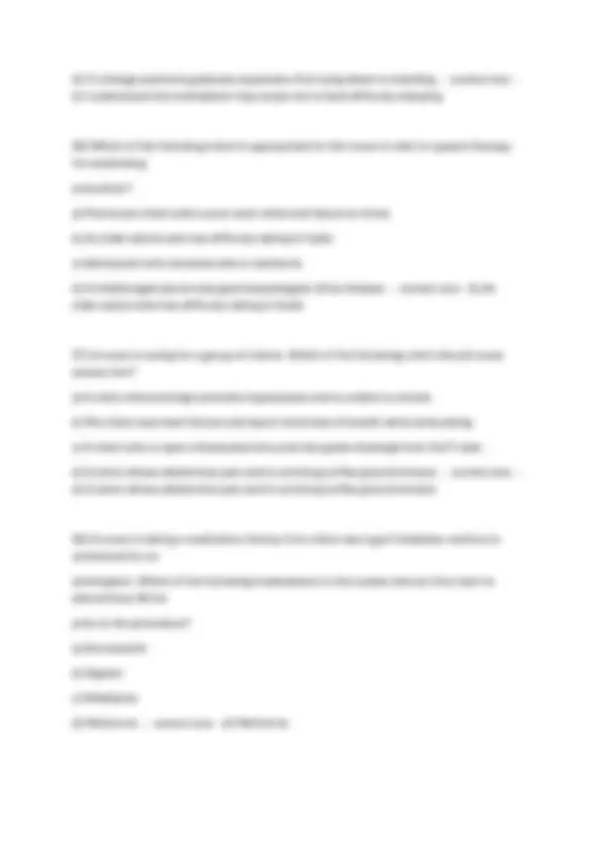
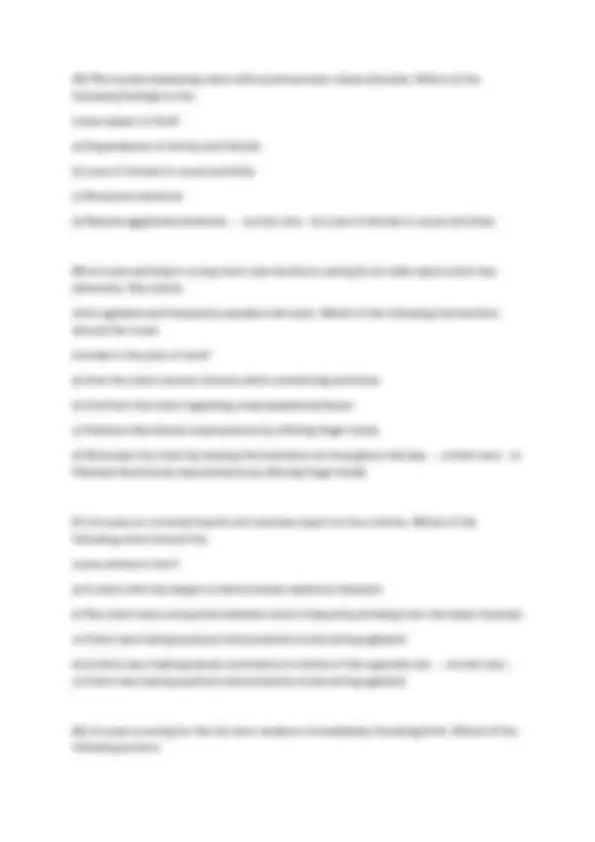
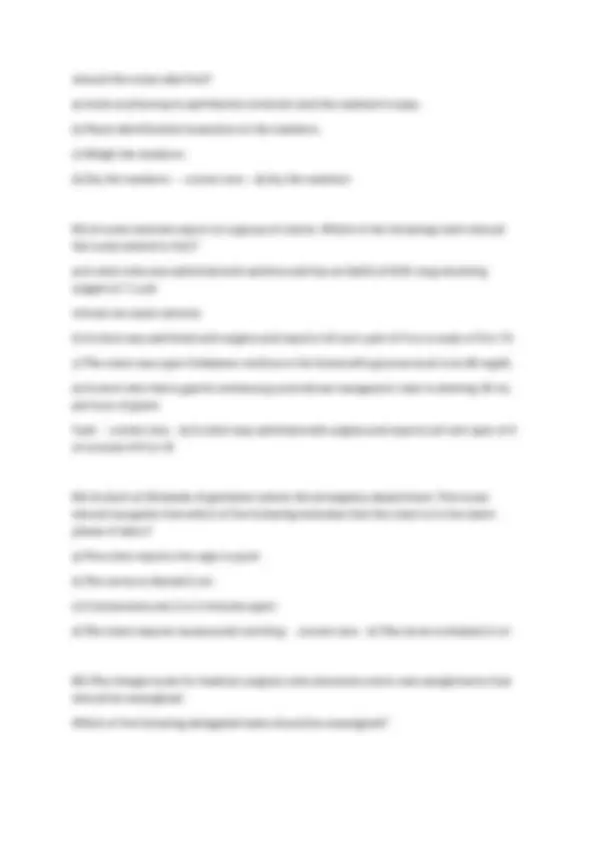
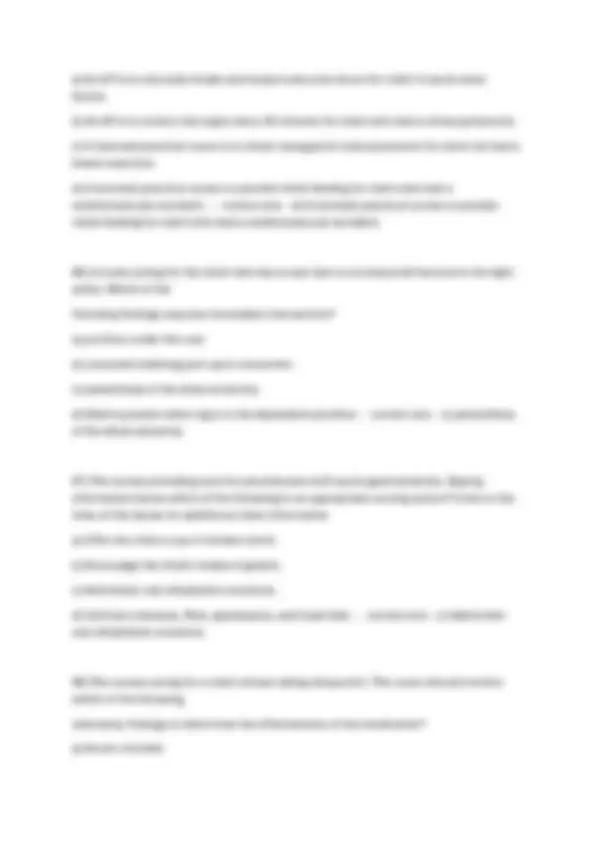
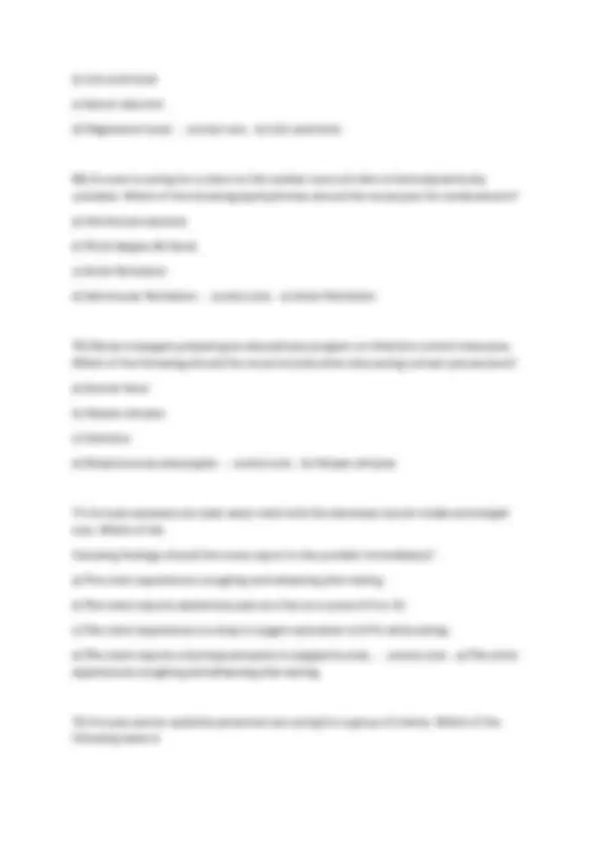
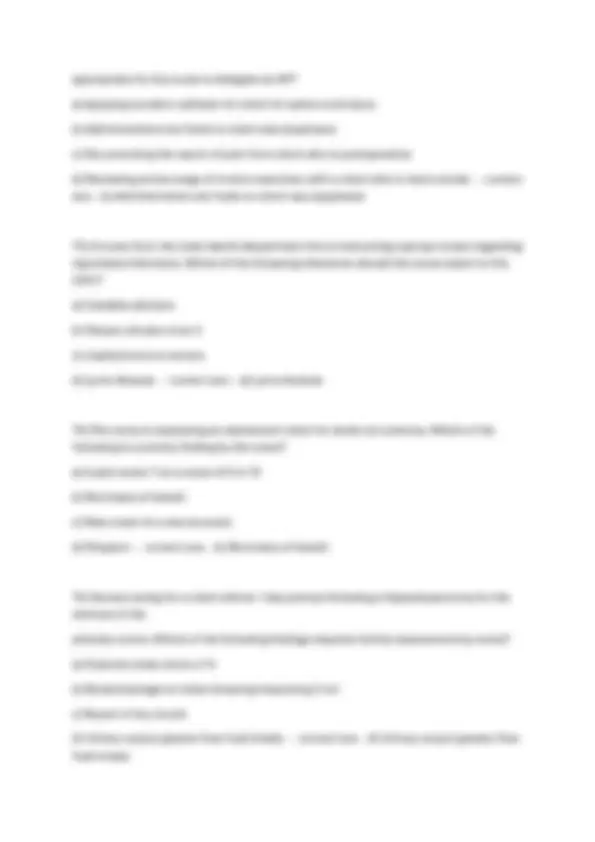
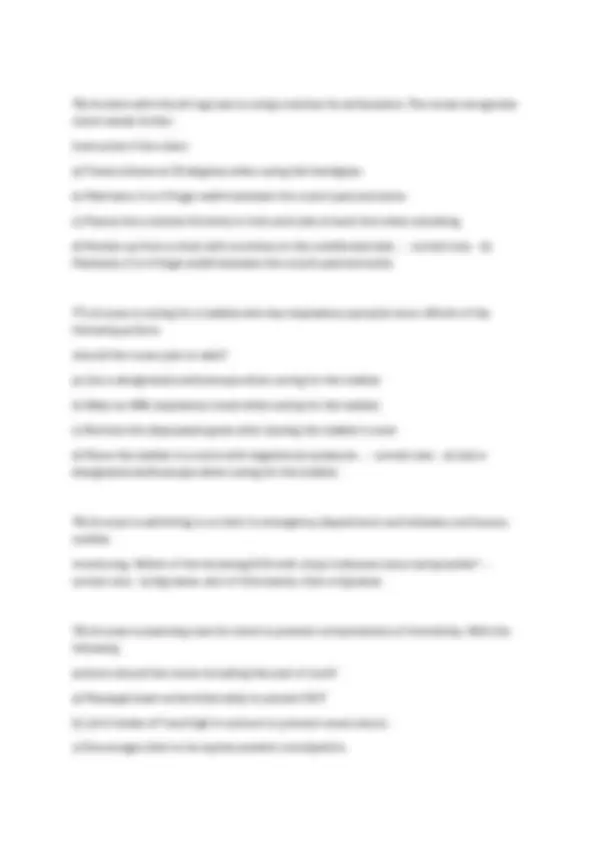


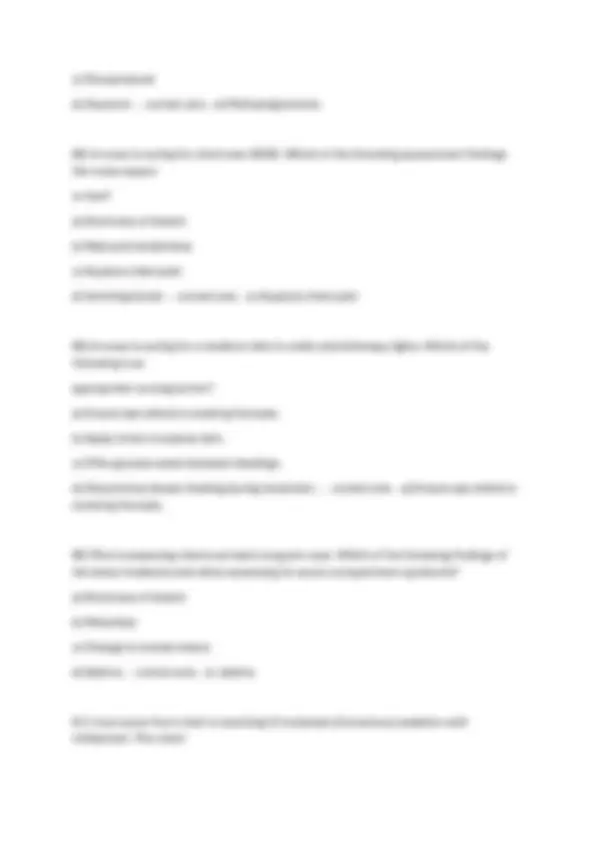
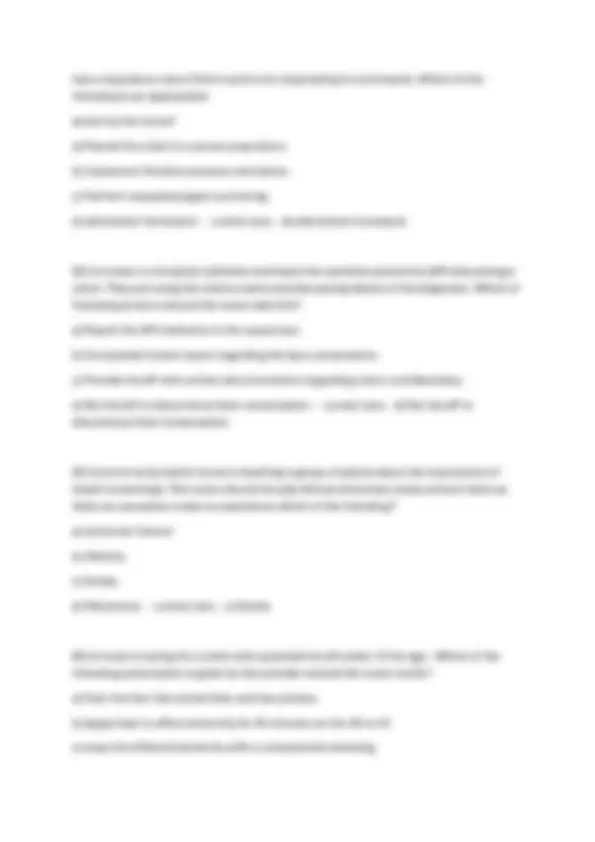
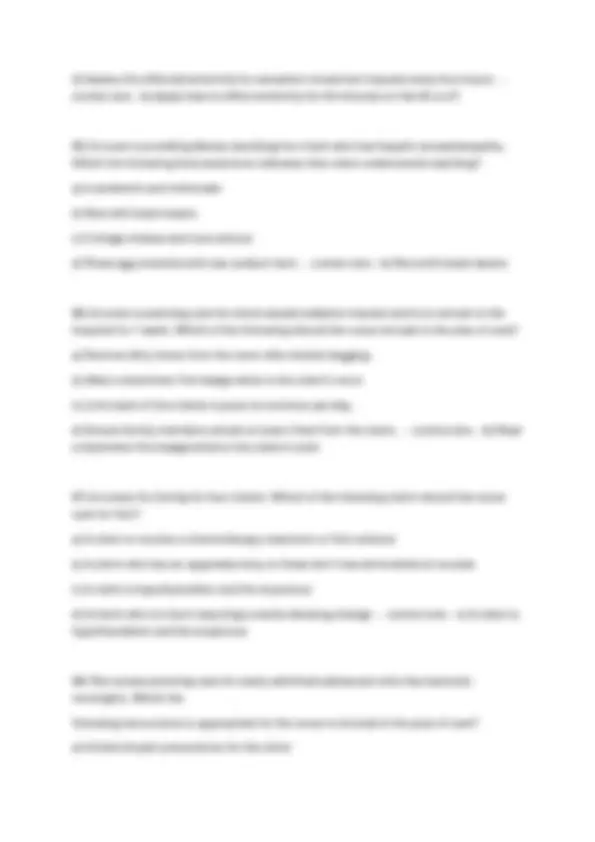
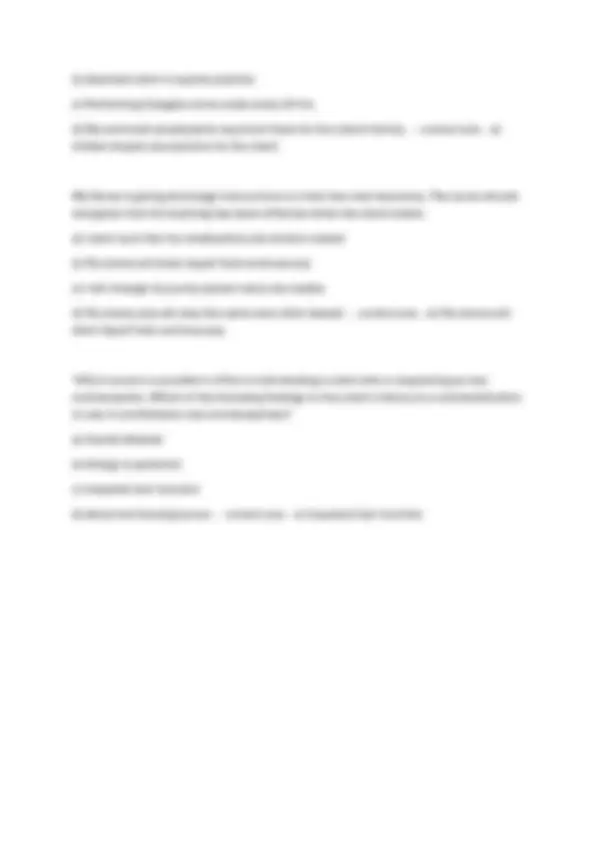


Study with the several resources on Docsity

Earn points by helping other students or get them with a premium plan


Prepare for your exams
Study with the several resources on Docsity

Earn points to download
Earn points by helping other students or get them with a premium plan
Community
Ask the community for help and clear up your study doubts
Discover the best universities in your country according to Docsity users
Free resources
Download our free guides on studying techniques, anxiety management strategies, and thesis advice from Docsity tutors
A.T.I Comprehensive Exit Exam 2025 Prep Guide: Updated Practice Questions, Detailed Answer Rationales, and Proven Strategies to Pass Your Nursing Final with Confidence
Typology: Exams
1 / 30

This page cannot be seen from the preview
Don't miss anything!























1) A nurse in an emergency department completes an assessment on an adolescent client that has conduct disorder. The client threatened suicide to teacher at school. Which of the following statements should the nurse include in the assessment? a) Tell me about your siblings b) Tell me what kind of music you like c) Tell me how often do you drink alcohol d) Tell me about your school schedule Rationale: When assessing an adolescent with conduct disorder who has threatened suicide, the nurse's priority is to identify immediate risk factors. Substance abuse, including alcohol use, significantly increases impulsivity and the risk of suicidal behavior. Therefore, assessing alcohol consumption is a critical and direct intervention to evaluate the client's safety. While other options provide general background information, they do not address the acute safety concern as directly as inquiring about substance use. 2) A nurse is observing bonding to the client her newborn. Which of following actions by the client requires the nurse to intervene? a) Holding the newborn in an en face position b) Asking the father to change the newborn's diaper c) Requesting the nurse take the newborn nursery so she can rest d) Viewing the newborn's actions to be uncooperative Rationale: Viewing the newborn's normal, involuntary actions as "uncooperative" suggests a potential misunderstanding of infant behavior and can be a red flag for impaired parent-infant bonding. This perception indicates a lack of empathy or realistic expectations for the newborn, which may hinder the development of a healthy
attachment. The other options are positive or normal behaviors that indicate healthy bonding or appropriate self-care. 3) A nurse is caring for client who is taking levothyroxin. Which of the following findings should indicate that the medication is effective? a) Weight loss b) Decreased blood pressure c) Absence of seizures d) Decrease inflammation Rationale: Levothyroxine is a synthetic thyroid hormone used to treat hypothyroidism. Hypothyroidism often leads to a slowed metabolism, which can cause symptoms like weight gain, fatigue, and cold intolerance. When levothyroxine is effective, it normalizes the metabolic rate, leading to a reversal of these symptoms, including a return to a healthy weight or weight loss if weight gain was a symptom of the hypothyroidism. The drug does not primarily affect blood pressure in this manner, treat seizures, or decrease inflammation. 4) A nurse is planning discharge teaching for cord care for the parent of a newborn. Which instructions would you include in the teaching?^1 a) Contact provider if the cord still turns black b) Clean the base of the cord with hydrogen peroxide daily c) Keep the cord dry until it falls off d) The cord stump will fall off in five days Rationale: The primary instruction for umbilical cord care is to keep it clean and dry. This promotes drying and natural detachment, minimizing the risk of infection. It is normal for the cord to turn black as it dries, so this is not a cause for concern. Hydrogen peroxide is generally not recommended as it can irritate the skin and delay healing. The cord stump typically falls off between 10 to 14 days, not usually as early as five days. 5) A nurse is assessing a client in the PACU. Which of the following findings indicates decreased cardiac output? a) Shivering b) Oliguria c) Bradypnea d) Constricted pupils
a) Place's cardiac monitoring b) Monitor the clients oxygen saturation level c) Provide standby assist with the client from bed d) Encourage foods high in potassium Rationale: Lisinopril, an ACE inhibitor, can cause orthostatic hypotension, especially with the first dose. This can lead to dizziness and an increased risk of falls when the client changes position. Providing standby assist is a crucial safety intervention to prevent injury. Cardiac monitoring and oxygen saturation monitoring are not routine for a first dose of lisinopril unless other conditions warrant them. Encouraging foods high in potassium is contraindicated, as ACE inhibitors can cause hyperkalemia (elevated potassium). 9) A nurse is caring for a client who is in labor and is receiving electronic fetal monitoring. The nurse is reviewing the monitor tracing and notes early decelerations. Which^2 the following should the nurse expect? a) Fetal hypoxia b) Abruptio placentae c) Post maturity d) Head Compression Rationale: Early decelerations are a common and benign finding in fetal heart rate monitoring, typically occurring during active labor. They are characterized by a gradual decrease in fetal heart rate that mirrors the contraction (nadir of deceleration coincides with the peak of the contraction) and are caused by compression of the fetal head during uterine contractions. They do not indicate fetal distress or hypoxia, unlike late or variable decelerations.
b) Eat 15 g of fiber per day c) Consume 48 ounces of water each day (need at least 64 oz) d) Drink hot water with lemon juice each morning when you wake up - - correct ans- - d) Drink hot water with lemon juice each morning when you wake up 22)? - - correct ans- -
d) Have AP check the medical record for prior blood glucose test results - - correct ans-
appropriate for the nurse to ask the client? a) Have your membranes ruptured? b) How far apart are your contractions? c) Do you have any active lesions? d) Are you positive for beta strap? - - correct ans- - c) Do you have any active lesions?
c) Meat and dairy products are eaten separately. d) Fasting from meat occurs during Hanukkah. - - correct ans- - c) Meat and dairy products are eaten separately. 52)? - - correct ans- -
should the nurse take first? a) Instill erythromycin ophthalmic ointment and the newborn's eyes. b) Place identification bracelets on the newborn. c) Weigh the newborn. d) Dry the newborn - - correct ans- - d) dry the newborn